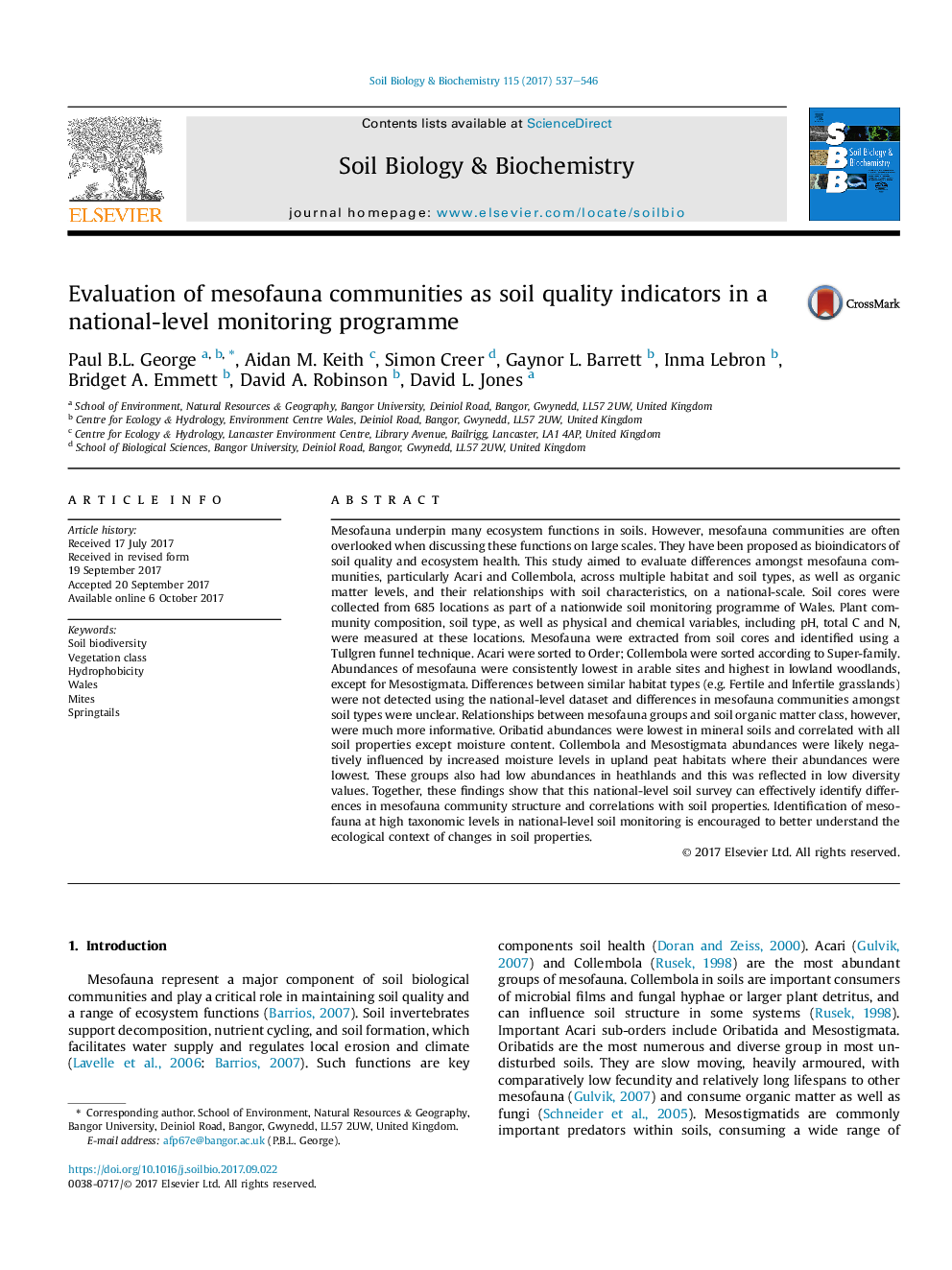| کد مقاله | کد نشریه | سال انتشار | مقاله انگلیسی | نسخه تمام متن |
|---|---|---|---|---|
| 5516275 | 1542569 | 2017 | 10 صفحه PDF | دانلود رایگان |
- Broad soil mesofauna groups differed among disparate habitats.
- Abundances lowest in arable sites; Collembola and predatory mites lower in uplands.
- Broad mesofauna groups did not differ between similar habitat/soil types.
- Oribatid mites were positively correlated with soil water repellency.
- Surveying broad mesofauna groups is recommended to compliment soil monitoring.
Mesofauna underpin many ecosystem functions in soils. However, mesofauna communities are often overlooked when discussing these functions on large scales. They have been proposed as bioindicators of soil quality and ecosystem health. This study aimed to evaluate differences amongst mesofauna communities, particularly Acari and Collembola, across multiple habitat and soil types, as well as organic matter levels, and their relationships with soil characteristics, on a national-scale. Soil cores were collected from 685 locations as part of a nationwide soil monitoring programme of Wales. Plant community composition, soil type, as well as physical and chemical variables, including pH, total C and N, were measured at these locations. Mesofauna were extracted from soil cores and identified using a Tullgren funnel technique. Acari were sorted to Order; Collembola were sorted according to Super-family. Abundances of mesofauna were consistently lowest in arable sites and highest in lowland woodlands, except for Mesostigmata. Differences between similar habitat types (e.g. Fertile and Infertile grasslands) were not detected using the national-level dataset and differences in mesofauna communities amongst soil types were unclear. Relationships between mesofauna groups and soil organic matter class, however, were much more informative. Oribatid abundances were lowest in mineral soils and correlated with all soil properties except moisture content. Collembola and Mesostigmata abundances were likely negatively influenced by increased moisture levels in upland peat habitats where their abundances were lowest. These groups also had low abundances in heathlands and this was reflected in low diversity values. Together, these findings show that this national-level soil survey can effectively identify differences in mesofauna community structure and correlations with soil properties. Identification of mesofauna at high taxonomic levels in national-level soil monitoring is encouraged to better understand the ecological context of changes in soil properties.
Journal: Soil Biology and Biochemistry - Volume 115, December 2017, Pages 537-546
